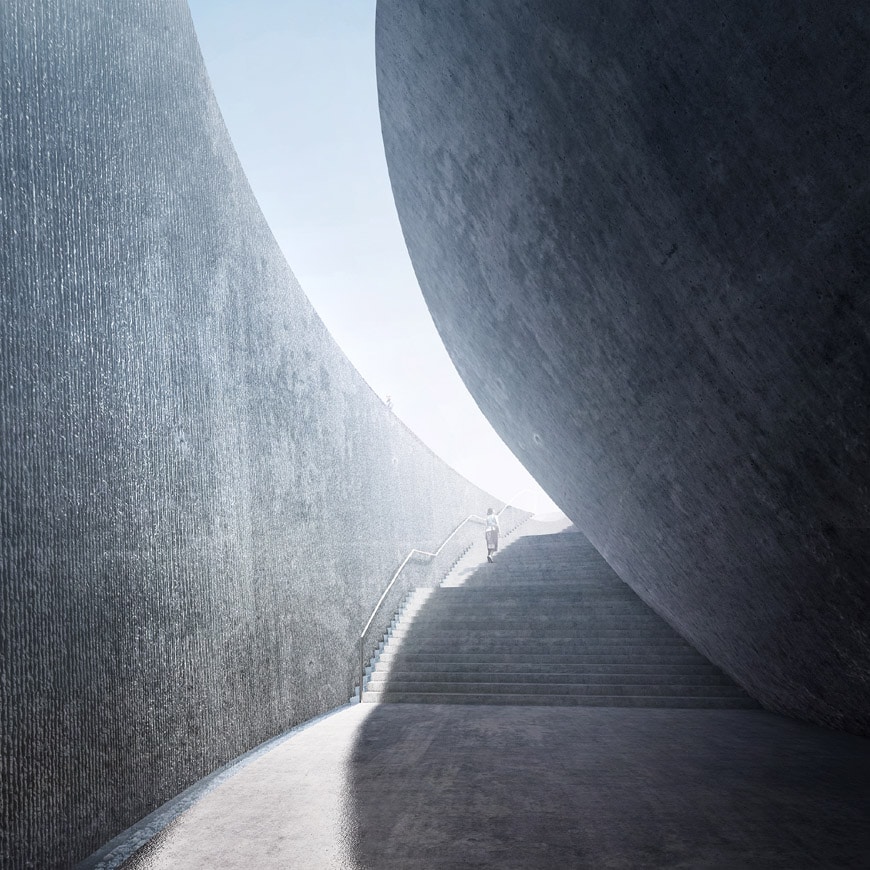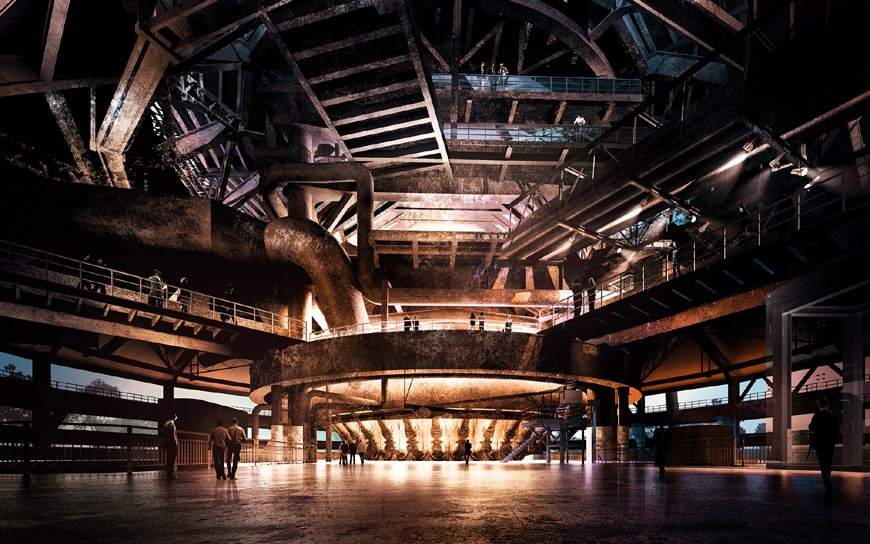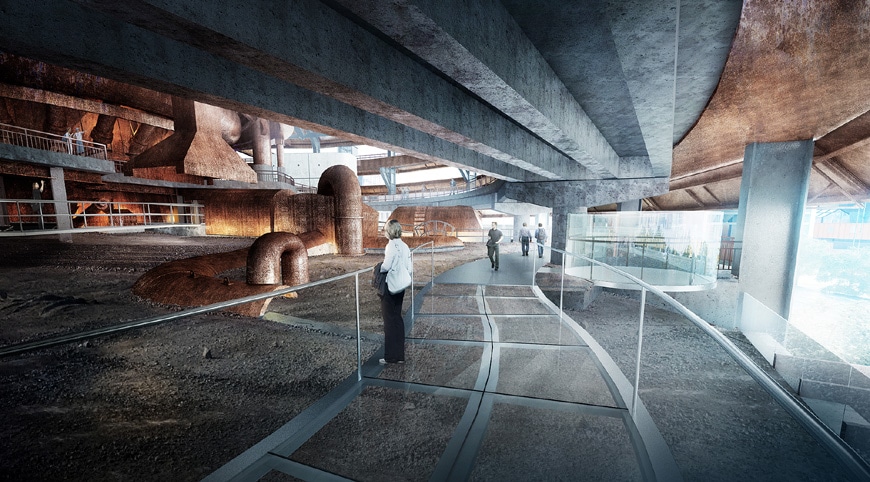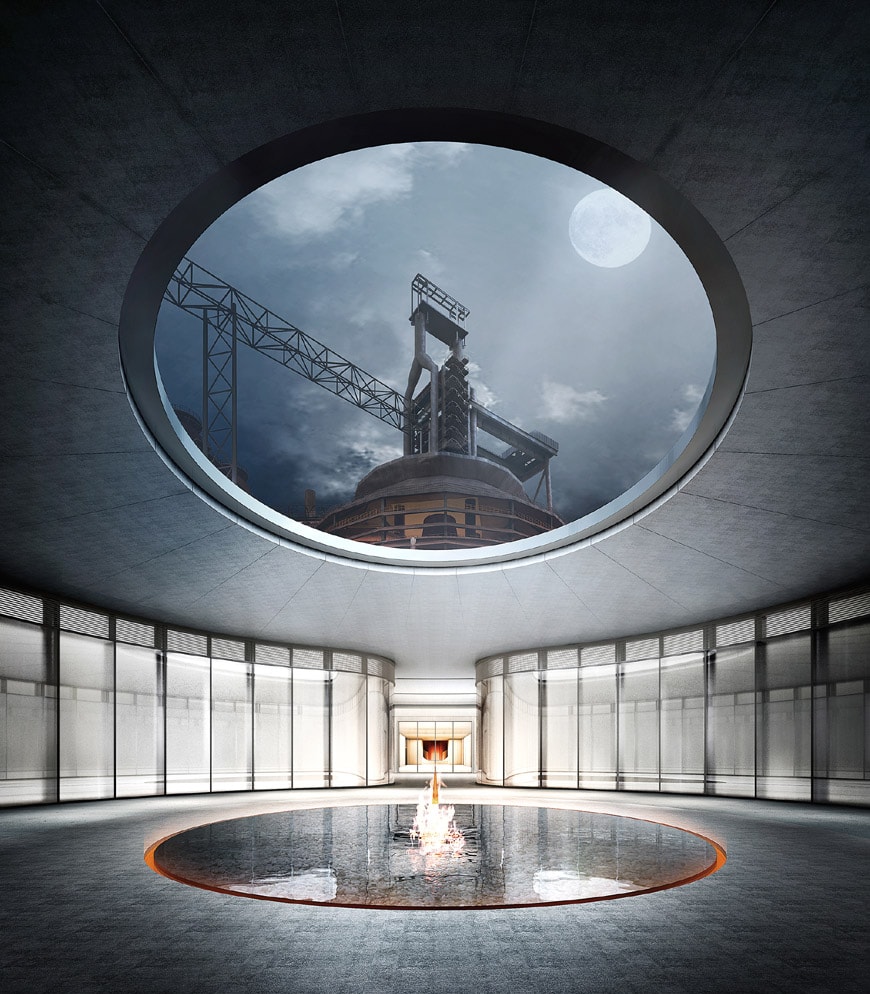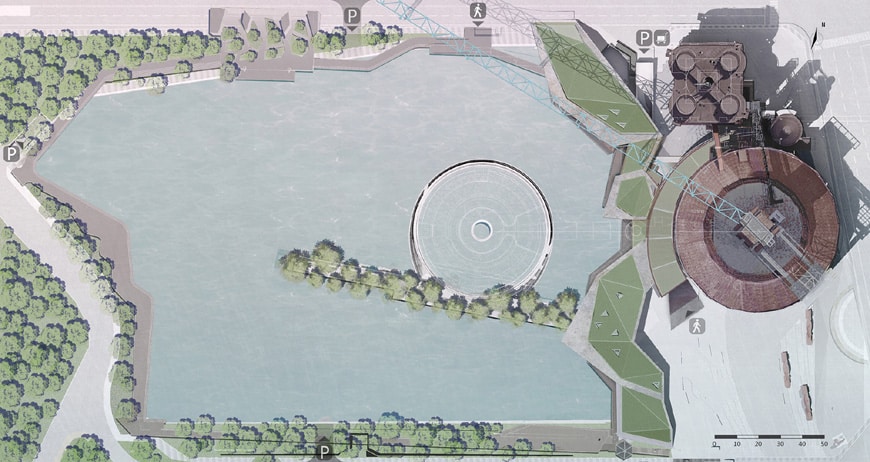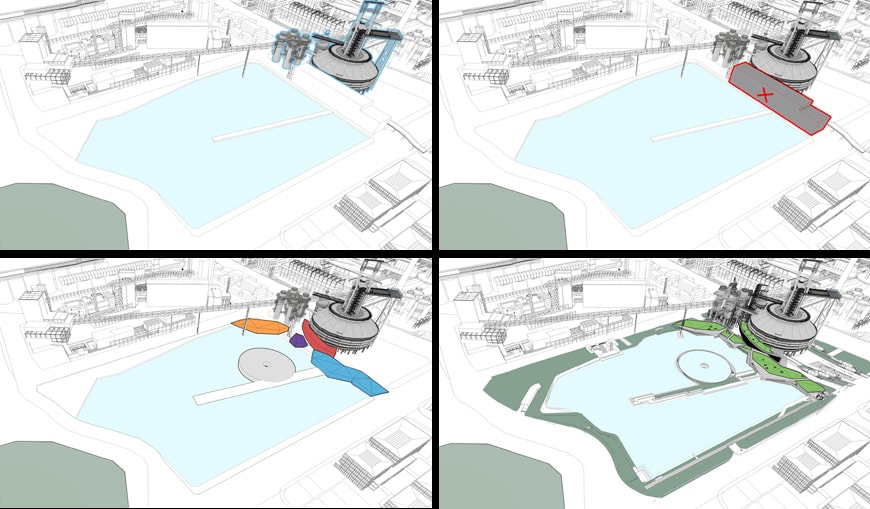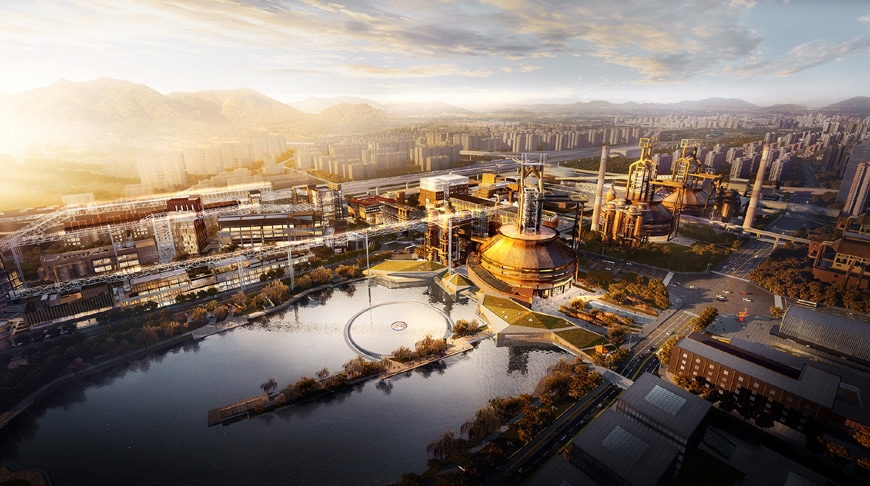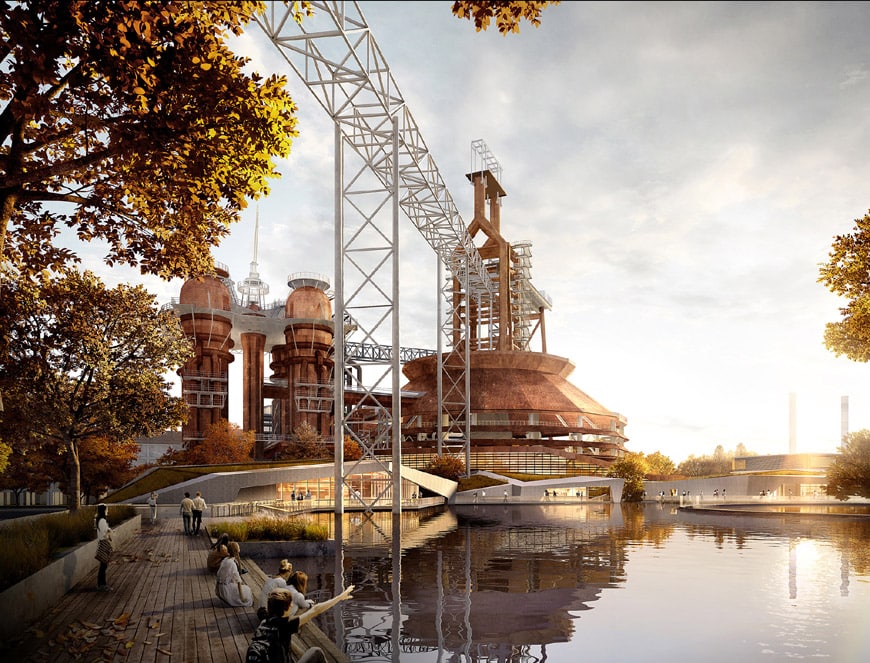CCTN Design transforms former blast furnace in Beijing into a museum
Beijing Shougang Construction Investment Co., Ltd
CCTN Design transforms a former blast furnace in Beijing into a museum
Chinese architectural firm CCTN Design has developed an ambitious regeneration project to convert a disused blast furnace in Beijing into a vibrant museum and cultural center.
When completed in 2019, the project will be the first regeneration of a disused steel factory in China.
The blast furnace is part of a large industrial complex operated by state-owned Chinese steel company Shougang Group, whose operations were relocated outside Beijing before the 2008 Olympics, thus making the metallurgical plant a disused one.
Then, Shougang decided to transform a part of the old plant, namely one of its three blast furnaces and its cooling pond, into a cultural complex, commissioning CCTN to design it.
To cope with such a complex scheme, the Chinese architectural firm conceived a very ingenious solution that combines the restorations and adaptive reuse of the huge blast furnace with the creation of new spaces for exhibitions of art, multicultural programs, and visitor facilities.
While the huge blast furnace and its building will be carefully restored to showcase the 100-year-long industrial past of the site, six of the old furnace’s service platforms will be converted into exhibition, education, and performance spaces.
Adjacent to the blast furnace, CCTN designed four earth-covered buildings that will accommodate various functions including a temporary exhibition hall, a restaurant, and a shop.
Finally, an “underwater” circular pavilion, 60 meters / 197 feet across, will be built in the middle of the cooling pond. Accommodating an art exhibition gallery, the pavilion will be connected to the furnace building by a 150-meter-long (492-foot-long) pier.
The regeneration project includes a park with trails, boardwalks, and public plazas.
Interior renderings of the blast furnace building
Exterior and interior views of the new buildings adjacent to the furnace.
Interior views of the “underwater” art pavilion.
In designing the complex, the architects were inspired by the philosophical principles of Taoism.
“In the philosophy system of Lao Zi and Zhuang Zhou, “Yin” and “Yang” mutually reinforce and neutralize each other while depending on each other. In Tao Te Ching, Lao Zi writes “To build houses, it is necessary to open doors and windows. Only after there are those void parts, the house can realize its own function.”, which illustrates the transformation relationship between “void and full”. In “On the Equality of Things” Zhuang Zhou writes: “Does Zhuang Zhou become a butterfly or the contrary? Undoubtedly, there shall be some difference between Zhuang Zhou and the butterfly. This is called the Transformation of Things.” *, which further illustrates the philosophical idea of subject and object reversibility. Abandoned industrial remains offer infinite possibilities for public use.”
* The architects cite a famous story in which Chinese philosopher Zhuang Zhou (also known as Zhuangzi), after dreaming he was a butterfly, asks himself whether he is a man who dreamt he was a butterfly or a butterfly dreaming that he is a man. (TLN)
Starting from those concepts, CCTN Design elaborated a three-point design strategy that combines conservation and regeneration.
“Seal up the old”, that is to treat modestly the industrial remains and save the unique urban memory of this land; “Remove the excessive”, that is to prudently remove the unnecessary buildings, and open the dialogue corridor between industry and nature; “weave the new”, that is to build a public space and embed functions aimed to stimulate the vigor and grow into a brand new part of urban life. This is a powerful catalysis; static protection transforms into dynamic regeneration.”
Shougang Blast Furnace No. 3 Museum, site plan.
Schematic diagram showing the three phases of the design process (left to right, top to bottom): “Sealing up the old”, “Removing the excessive”, and “Weaving the new”, and the final setup.
Shougang Blast Furnace No. 3 Museum Beijing, aerial view
CCTN Design is a Shanghai-based design firm – founded and led by Cheng Taining, academician of the Chinese Academy of Engineering – which provides architectural design, urban planning, landscape design, and interior design services. Bo Hongtao, the chief architect of CCTN Design, has won the Chinese Youth Architect Award, and the 2017 Royal Institute of Urban Planning Academy Excellence Program Award.
Project data
Construction site: Shougang Plant at Shijing Mountain, Beijing
Scheduled completion: early 2019
Project size: 49,800 sqm (536,000 sqft)
Client: Beijing Shougang Construction Investment Co., Ltd.
Client’s Design & Management Team: Wang Shizhong, Liu Hua, Jin Hongli, Xu Yan, Chai Dewen, Dong Quanxi
Design team: CCTN Design, Shougang CCTN, Shougang International Engineering Co., Ltd.
Plan (CCTN Design): Bo Hongtao, Liu Pengfei, Zhang Yang, Gao Wei, Fan Dandan, Kang Qi, Zhou Mingxu
Architecture (CCTN Design www.acctn.com): Bo Hongtao, Zhao Jiakang, Zhang Yang, Gao Wei, Zhang Zhicong, Zhu Xueyun, Kang Qi, Li Kehui, Tan Xirui, Pang Tailong, Zhou Mingxu, Zhao Mengmeng, Ni Ziyu
Mechanical and electrical engineering: Shougang International Engineering Co., Ltd. + CCTN Design
View of the promenade around the cooling pool
All images courtesy of CCTN Design
copyright Inexhibit 2025 - ISSN: 2283-5474

